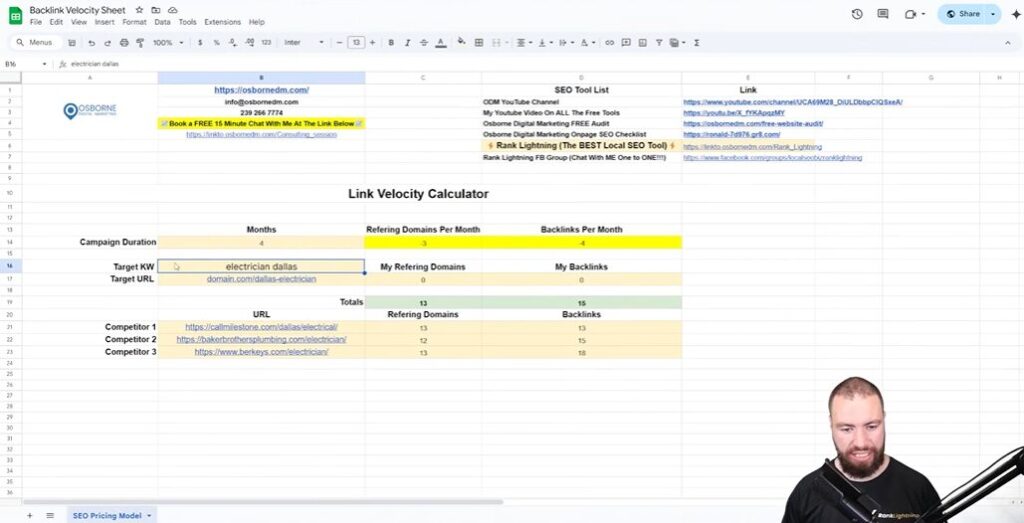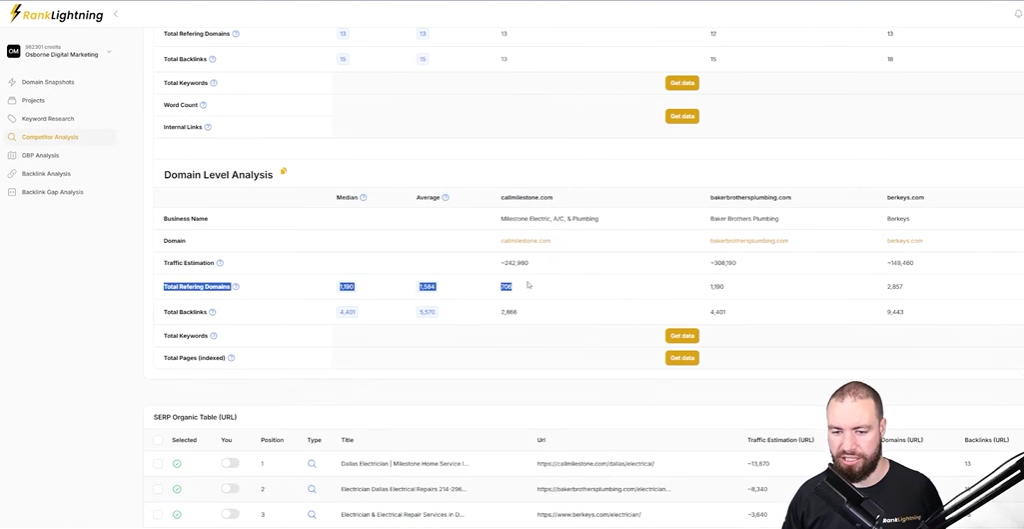When I first ventured into the world of SEO, I was overwhelmed by the flood of information regarding backlinks, their importance, and how to measure their impact. One day, I found myself questioning the concept of link velocity - a term I had heard thrown around in countless discussions. As I dug deeper, I realized just how pivotal link velocity is to successful SEO. Today, I want to share my insights with you, including a handy tool I've developed - a free link velocity calculator to streamline this process!
TL;DR: Link velocity is crucial for SEO success. My free backlink velocity calculator simplifies measuring and strategizing your backlink acquisition for better rankings.
Let's dive into the concept of link velocity. At its core, link velocity refers to the pace at which a website acquires backlinks. Think of it as the speed limit on the road to SEO success. If you go too fast, you might get pulled over. If you go too slow, you risk getting left behind. So, what does this mean for your website?
Link velocity is not just a fancy term; it’s a critical component of any successful SEO strategy. When we talk about link velocity, we’re looking at how backlinks are accumulated over time. This includes factors like:
It’s essential to monitor this because search engines like Google analyze link velocity to determine the legitimacy of a website’s link-building efforts. If you suddenly gain hundreds of backlinks in a week, it could raise a red flag. Think of it like a sudden influx of new friends on social media. It might look suspicious!
Now, why should we care about link velocity? Well, it plays a vital role in SEO rankings. Here’s why:
In my experience, I’ve seen websites that focus on consistent, gradual link acquisition often outperform those that attempt to rush the process. It’s like planting a tree. You wouldn’t expect it to grow overnight, right? You nurture it, and over time, it flourishes.
When it comes to link acquisition, there are generally two schools of thought: natural link acquisition and aggressive link building. Let’s break these down.
Natural Link Acquisition involves earning backlinks organically. This is often achieved by creating high-quality content that others want to link to. It’s about building relationships and providing value. When you take this approach, you’re likely to see a steady increase in link velocity over time.
On the other hand, aggressive link building focuses on obtaining a large number of backlinks in a short period. This method can be tempting, especially when you’re eager to see results. However, it can backfire. Search engines may interpret this sudden spike as unnatural behavior. This could lead to penalties or a drop in rankings. It’s like trying to sprint a marathon. You might start strong, but you won’t finish well.
To illustrate, let’s say you’re targeting a competitive keyword, like “electrician Dallas.” If you suddenly acquire hundreds of backlinks in a week, Google might flag your site as suspicious. Instead, a more measured approach - building a few quality links each month - is often more effective.
As Ron from Osborne Digital Marketing points out, “If someone were to build out all backlinks in a short time, Google might flag this as unnatural behavior.” It’s essential to set realistic expectations. SEO is a marathon, not a sprint.
In conclusion, understanding link velocity can significantly impact your SEO strategy. By focusing on natural link acquisition and maintaining a steady pace, you can enhance your website's trustworthiness and improve your rankings over time. Remember, it’s not just about the quantity of links; it’s about the quality and how you acquire them.

When I first stumbled upon the Backlink Velocity Calculator, I was intrigued. This tool is a game changer in the realm of SEO. It helps you understand link velocity, which is simply the speed at which you acquire backlinks. Think of it as a pulse check for your website's health in the search engine world. Too fast? You might get penalized. Too slow? You could be left behind.
One of the standout features of this calculator is its user-friendly interface. It has different sections that are color-coded for easy navigation. The green sections automatically generate data based on your inputs, while the yellow sections require you to fill in specific information. This makes it accessible for both beginners and seasoned pros alike.
Ready to dive in? Here’s a simple step-by-step guide to using the Backlink Velocity Calculator:
By following these steps, you can effectively harness the power of the calculator to improve your link-building strategy.
Now, let’s talk about the importance of competitor data. Understanding what your competition is doing can give you a significant edge. Ron emphasizes that by inputting data from your competitors, you can gauge how many referring domains and backlinks you need to achieve your goals.
Here’s how to do it:
By incorporating competitor insights, you can create a more effective and targeted backlink strategy. It’s not just about what you have; it’s about understanding the landscape.
In the end, the Backlink Velocity Calculator is more than just a tool. It’s a roadmap for your SEO journey. It helps you set realistic expectations and encourages a data-driven approach. After all, SEO is not just about speed; it’s about strategy. By taking the time to analyze your link-building efforts, you’ll be better equipped to navigate the complexities of search engine optimization.
So, are you ready to take your backlink strategy to the next level? The Backlink Velocity Calculator is waiting for you!

When it comes to SEO, understanding link velocity is crucial. But what exactly is link velocity? Simply put, it's the speed at which you acquire backlinks. If you’re not careful, you could fall into some common pitfalls. Let’s explore these pitfalls and strategies to maintain a healthy link profile, along with some real-life examples that can guide us.
We often think that more links mean better rankings. But that’s not always true. One of the biggest mistakes is acquiring too many backlinks too quickly. Think of it like running a marathon. If you sprint at the start, you’ll tire out long before the finish line. The same applies to link building.
Ron from Osborne Digital Marketing emphasizes that “if someone were to build out all backlinks in a short time, Google might flag this as unnatural behavior.” This can lead to penalties that hurt your rankings.
Now that we’ve covered the pitfalls, let’s talk about strategies to keep your link profile healthy. Here are some practical tips:
By following these strategies, you can build a robust link profile that stands the test of time. Remember, it’s about quality over quantity.
Let’s look at some real-life examples to see these strategies in action. One local business, an electrician in Dallas, focused on building relationships with local bloggers and industry influencers. Instead of chasing after hundreds of links, they targeted a few high-quality sites. This approach not only improved their link profile but also increased their local visibility.
Another case involved a small e-commerce store that created a series of how-to guides related to their products. They shared these guides on social media and reached out to relevant websites for backlinks. Over time, this strategy built a diverse and healthy link profile, leading to improved rankings and sales.
These examples show that with the right approach, it’s possible to manage link velocity effectively. It’s not just about getting links; it’s about getting the right ones.
In conclusion, managing link velocity is a balancing act. A backlink velocity calculator may be a helpful tool. You need to be strategic in your approach to avoid common pitfalls while focusing on quality and diversity. By setting realistic goals and utilizing tools for analysis, you can build a healthy link profile. Remember to learn from real-life examples and adapt your strategies accordingly. SEO is not a sprint; it’s a marathon. With patience and the right tactics, you can achieve sustainable growth without risking penalties. Let’s keep our link-building efforts smart and effective!